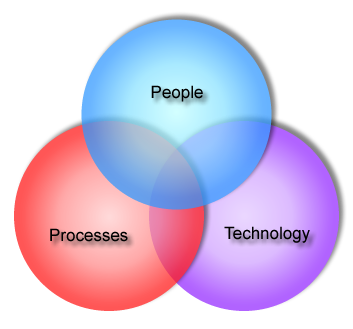 If you want to build a successful social business, then you need to understand how it will impact your company. For example, you need to understand there’s a difference between activities like launching miscellaneous marketing campaigns using social media channels and implementing corporate-wide initiatives.
If you want to build a successful social business, then you need to understand how it will impact your company. For example, you need to understand there’s a difference between activities like launching miscellaneous marketing campaigns using social media channels and implementing corporate-wide initiatives.
The latter situation is a change management issue – and that means it will impact people, processes, and technology.
People
You know the old adage “As above, so below?” The collaborative corollary is “As within, so without.” Thus, if you wish to truly engage with folks external to your company, that is customers and partners, then you also need to foster a corporate environment where employees collaborate with each other.
Keep in mind, though, change won’t just happen. It requires a combination of:
- Leadership,
- Planning,
- Training,
- Promotion,
- Discussion, and
- Incentive.
Additionally, change is best digested in bite-sized meals so seek to implement step-changes to reach to your end goal. Set progressively more demanding expectations and Key Performance Indicators (KPIs) to instill and foster a collaborative corporate culture.
Processes
Deploying a social business model will require changes to how you manage your business workflows, collect information about your customers and partners and their activities, and analyze results.
To have longevity, the way you implement the model has to create a win-win between the external audiences, of customer and partners, and the company. A balanced social model will have processes that allow a company to be:
- Humanistic (including being customer centric and collaborative).
- Efficient.
- Cost-effective.
- Scalable.
Social Technology
For enterprise organizations, the ability to scale the technology solutions that will support your people and processes will be important.
Start with your traditional, transactional Customer Relationship Management (CRM) solution and add in social components.
Components of the social technology platform include:
- Traditional CRM,
- Social CRM add-ons like
- Community management solutions (think Facebook, Lithium, Jive, or other solutions that allow you to create a network or forum).
- Collaboration solutions (think in terms of file sharing, document management, etc. Salesforce Chatter is an example).
- Social monitoring or analytics solutions (think Radian6, Attensity, or Sysomos).
- Integration costs.
If you want to know more, then tune tomorrow’s Focus Roundtable discussion on The Business of Social Business. People, process, and technology impacts will be a centerpiece to this session.

